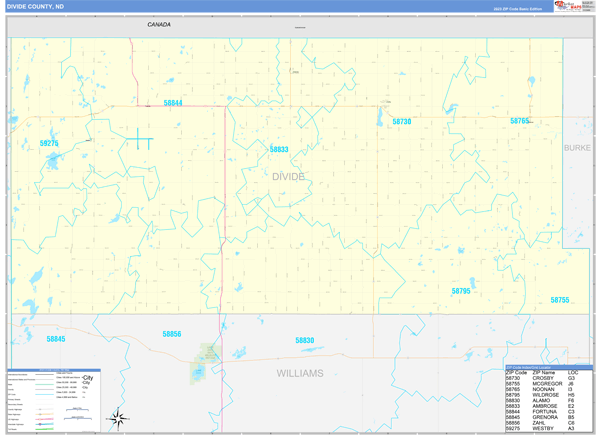
ĭivide County is one of several western North Dakota counties with significant exposure to the Bakken Formation in the Williston Basin.

The county has a total area of 1,294 square miles (3,350 km 2), of which 1,261 square miles (3,270 km 2) is land and 33 square miles (85 km 2) (2.6%) is water. The terrain generally slopes to the east the northern part also slopes to the north while the southern part slopes to the south. The terrain of Divide County consists of semi-arid rolling hills, dotted with lakes and ponds, partially devoted to agriculture. Its northern boundary line abuts the south boundary line of Canada, opposite Saskatchewan, and its west boundary line abuts the east boundary line of the state of Montana. Geography ĭivide County lies at the northwest corner of North Dakota. Most histories attribute the county name to its "division" from Williams County, though the county's location on the Laurentian Divide, separating runoff waters between Hudson Bay and Gulf of Mexico, may have been involved. The county government was effected on December 9 of that year, and the county's boundaries have remained unchanged since that time.

The vote was affirmative the southern portion retained the Williams name the newly created county was named "Divide", with Crosby as the seat. On November 8, 1910, election, the voters of Williams County voters determined that the county should be divided into a northern and a southern county. As of the 2020 census, the population was 2,195.


 0 kommentar(er)
0 kommentar(er)
